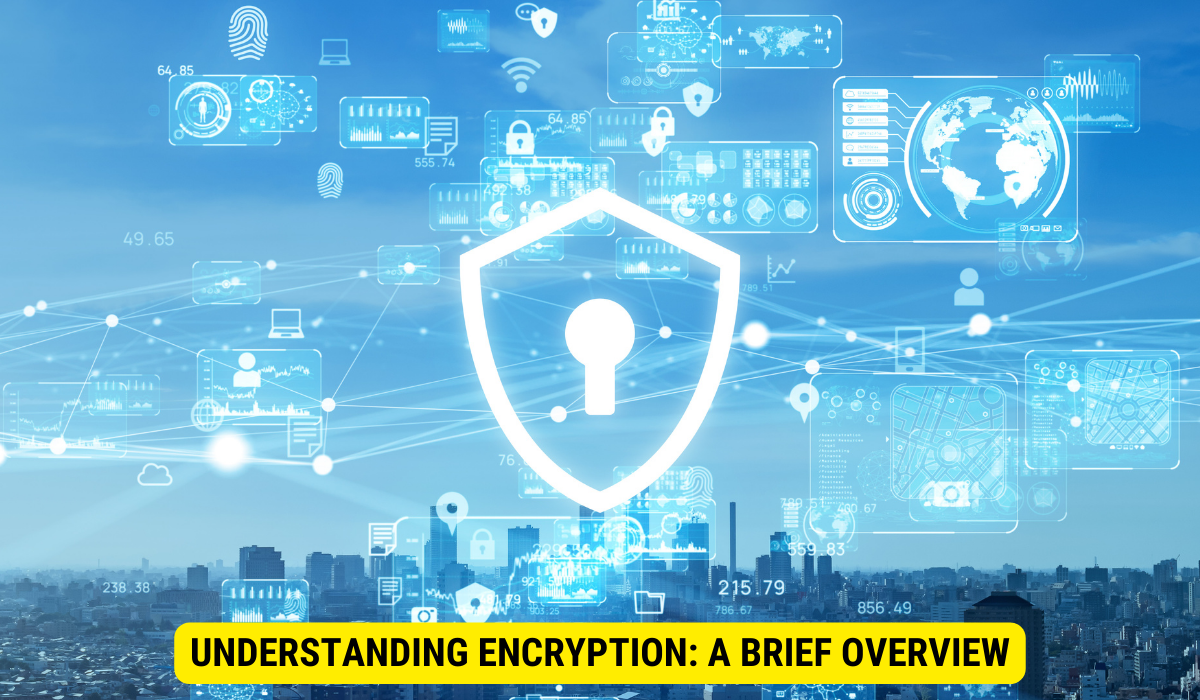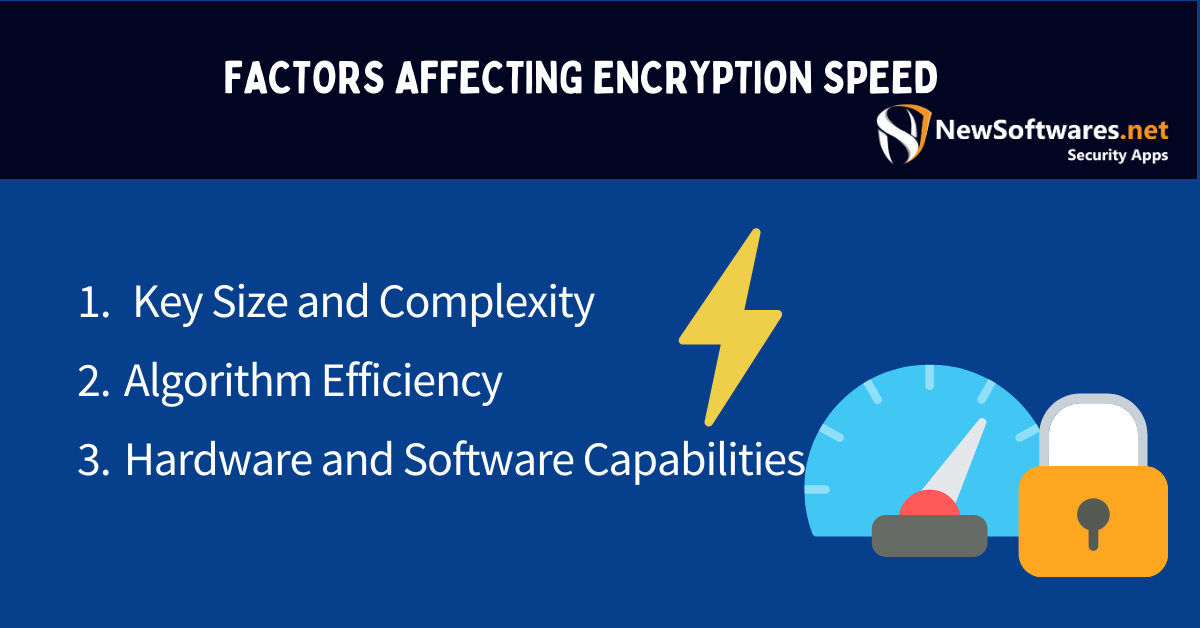The Advanced Encryption Standard (AES) is the fastest and most secure method for encrypting large amounts of data due to its efficient implementation and ability to handle substantial data sets.
In today’s digital world, where data security concerns are at an all-time high, encryption plays a crucial role in safeguarding sensitive information. However, when it comes to encrypting large amounts of data, speed becomes a crucial factor to consider. Together, we will discover various types of encryption methods, factors affecting encryption speed, and the fastest encryption methods available for handling large data sets.
Understanding Encryption: A Brief Overview

Before diving into the specifics, let’s first establish a common understanding of what encryption is and why it is vital in the realm of data security.
Encryption is the process of encoding information in such a way that it becomes unintelligible to anyone except those with the appropriate decryption key. By doing so, encryption ensures that even if an unauthorized person gains entree to the encrypted data, it remains incomprehensible.
Encryption plays a crucial role in protecting sensitive information in today’s interconnected world. Whether it’s personal data, financial transactions, or confidential business communications, encryption acts as a powerful shield against unauthorized access and potential misuse.
Definition of Encryption
In simple terms, encryption is a method to scramble data using complex algorithms and keys, rendering it unreadable to unauthorized individuals.
When data is encrypted, it undergoes a transformation that makes it appear as a jumbled mess of characters and symbols. This transformation is achieved through the use of mathematical algorithms that manipulate the data in a way that is reversible only with the correct decryption key.
Encryption algorithms are designed to be computationally intensive, making it extremely problematic and time-consuming for attackers to decrypt the data without the proper key. The strength of encryption lies in its ability to create a virtually impenetrable barrier, ensuring the confidentiality and integrity of the information.
Importance of Encryption in Data Security
Data breaches and cyber-attacks have become commonplace in today’s digital landscape. Hackers and malicious actors are constantly seeking ways to exploit vulnerabilities and gain unauthorized access to sensitive information.
By implementing robust encryption protocols, organizations can mitigate the risk of data compromise and protect sensitive information from falling into the wrong hands. Encryption acts as a last line of defense, even if other security measures fail to prevent unauthorized access.
Encryption not only protects data at rest, but it also ensures the security of data in transit. When data is transmitted over networks, such as the Internet, it is vulnerable to interception. Encryption safeguards the confidentiality of the data, making it useless to anyone who intercepts it without the decryption key.
Furthermore, encryption is crucial for ensuring agreement with various data protection regulations i:e the Health Insurance Portability, General Data Protection Regulation, & Accountability Act. These regulations require organizations to implement appropriate security measures, including encryption, to protect personal and sensitive data.
In conclusion, encryption is a fundamental component of data security. It provides a robust layer of protection, ensuring the secrecy, integrity, and availability of sensitive information. By understanding the definition and importance of encryption, persons and organizations can make informed decisions to safeguard their data in an increasingly interconnected world.
Different Types of Encryption Methods
Encryption is a crucial aspect of modern communication and data security. It guarantees that sensitive information remains confidential and protected from unauthorized access. There are several encryption methods available, each with its unique characteristics and applications. Let’s explore three widely used encryption techniques: symmetric encryption, asymmetric encryption, and hash functions.
Symmetric Encryption
Symmetric encryption, also known as secret key encryption, is one of the oldest and simplest encryption methods. It employs the identical key for both encryption and decryption processes. This method is known for its simplicity and fast processing speed, making it suitable for various applications.
However, the challenge lies in securely sharing the encryption key between the communicating parties. If an attacker interrupts the key during transmission, they can easily decrypt the encrypted data. To address this issue, secure key exchange protocols like the Diffie-Hellman key exchange algorithm are used to establish a joint secret key without transmitting it directly.
Despite its efficiency, symmetric encryption is not ideal for encrypting large amounts of data. As the data size increases, the key size also needs to increase linearly, resulting in performance degradation. To overcome this limitation, symmetric encryption is often used in combination with other encryption methods, such as hybrid encryption.
Asymmetric Encryption
Asymmetric encryption, also called public-key encryption, is a revolutionary encryption method that addresses the key distribution problem of symmetric encryption. It utilizes two mathematically related keys – a public key for encryption and a remote key for decryption.
With asymmetric encryption, anyone can use the recipient’s free key to encrypt a message, but only the recipient possessing the corresponding private key can decrypt it. This method eliminates the need for securely sharing a single key between parties, making it highly convenient for secure communication over insecure channels like the Internet.
While asymmetric encryption provides a convenient solution for key distribution, it is computationally more intensive compared to symmetric encryption. The mathematical operations involved in asymmetric encryption algorithms, such as RSA and Elliptic Curve Cryptography (ECC), are more complex and time-consuming.
Consequently, encrypting large amounts of data using asymmetric encryption can considerably impact processing speed. To overcome this limitation, hybrid encryption is often employed, where a symmetric encryption algorithm is used to encrypt the actual data, and the symmetric key is encrypted using the receiver’s public key.
Hash Functions
Hash functions are cryptographic algorithms that convert variable-length data into fixed-length hash values. Unlike symmetric and asymmetric encryption, hash functions are primarily used for data integrity verification rather than confidentiality.
Hash functions play a crucial role in ensuring the integrity of data during transmission and storage. By generating a unique hash value for a given input, hash functions can detect even the slightest modification in the data. Popular hash functions include MD5, SHA-1, and SHA-256.
The advantage of hash functions lies in their speed and ability to generate unique hash values for different inputs. This property makes them ideal for verifying the integrity of large files and ensuring that the data has not been tampered with.
However, hash functions alone cannot be used to decrypt the original data. They are one-way functions, meaning it is computationally infeasible to retrieve the original data from its hash value. This property makes hash functions suitable for password storage, digital signatures, and other applications where data confidentiality is not a requirement.
In conclusion, encryption methods are essential tools for ensuring data security and privacy. Symmetric encryption, asymmetric encryption, and hash functions each have their strengths and weaknesses, making them suitable for different scenarios. By understanding these encryption techniques, individuals and organizations can make informed decisions to protect their sensitive information.
Factors Affecting Encryption Speed

Several factors influence the speed of encryption algorithms when processing large amounts of data. Let’s explore three primary factors: key size and complexity, algorithm efficiency, and hardware and software capabilities.
Key Size and Complexity
Encryption algorithms utilize keys to control the encryption and decryption processes. The size and complexity of these keys directly impact the time required for encryption and decryption operations. Larger and more complex keys can significantly slow down encryption processes.
Algorithm Efficiency
The efficiency of an encryption algorithm refers to its ability to perform encryption and decryption operations swiftly without compromising security. Algorithms with optimized designs and streamlined processes tend to offer faster processing speeds.
It is important to note that algorithm efficiency should never come at the cost of compromising security. Finding the right equilibrium between speed and security is critical.
Hardware and Software Capabilities

The hardware and software capabilities of the system executing the encryption processes also impact speed. Utilizing hardware acceleration, such as specialized encryption chips or encryption offloading, can significantly boost encryption speed.
Furthermore, optimizing software implementations and leveraging parallel computing techniques can enhance encryption efficiency on multi-core CPU systems.
Evaluating Encryption Speed for Large Data
When dealing with large data sets, it becomes crucial to assess encryption speed accurately. It requires striking a delicate balance between the need for a fast encryption process and the importance of maintaining robust data security.
Speed vs. Security Trade-off
Organizations must carefully consider their specific requirements when evaluating encryption speed for large data. While faster encryption methods may provide quicker results, they might not offer the same level of security as slower alternatives.
It is essential to weigh the trade-off between encryption speed and the desired level of security, ensuring that the chosen encryption method aligns with the organization’s risk tolerance.
Impact of Data Size on Encryption Speed
Encryption speed is directly affected by the size of the data being encrypted. As the data size increases, the encryption process takes longer to complete. Therefore, when dealing with large amounts of data, organizations should anticipate longer encryption times.
Fastest Encryption Methods for Large Data
While several encryption methods are available, only a few excel in handling large data sets efficiently. Let’s explore some of the fastest encryption methods for encrypting substantial amounts of data.
Advanced Encryption Standard (AES)
AES, a symmetric encryption algorithm, is widely regarded as one of the most secure and fastest encryption methods available. Its efficient implementation and ability to handle large data sets make it a popular choice for various applications.
By key sizes ranging from 128 to 256 bits, AES strikes an optimal balance between security and processing speed.
Blowfish and Twofish
Both Blowfish and Twofish are symmetric encryption algorithms known for their speed and excellent performance in encrypting large data volumes. Blowfish, in particular, gained popularity due to its simple and efficient design.
While Twofish, a more advanced variant of Blowfish, offers stronger security, both algorithms provide fast encryption speed, making them suitable for large data encryption scenarios.
RSA Encryption
RSA, an asymmetric encryption algorithm, relies on the use of mathematically related keys for encryption and decryption processes. While RSA is generally computationally intensive, its efficiency can be improved by employing optimized implementations and utilizing hardware acceleration techniques.
Although RSA may not match the encryption speed of symmetric algorithms, its ability to securely encrypt and decrypt large amounts of data makes it a viable option for specific use cases.
Key Takeaways
- Encryption transforms data into an unreadable format to protect it from unauthorized access, ensuring data confidentiality.
- AES stands out as one of the fastest encryption methods, especially for large data sets.
- Symmetric encryption methods like AES, Blowfish, and Twofish are typically faster than asymmetric methods for vast amounts of data.
- While evaluating encryption methods, it’s essential to balance between speed and the desired security level.
- Encryption plays a vital role in adhering to data protection regulations like GDPR and HIPAA.
FAQs
What is the primary purpose of encryption?
The primary purpose of encryption is to encode information, making it unintelligible to unauthorized users ensuring data confidentiality and protection against unauthorized access.
How does AES differ from other encryption methods like RSA?
AES is a symmetric encryption method known for its speed and efficiency, especially with large data sets. In contrast, RSA is an asymmetric encryption method that is generally more computationally intensive but can be optimized for certain use cases.
Are symmetric encryption methods generally faster than asymmetric methods for large data?
Yes, symmetric encryption methods like AES, Blowfish, and Twofish are typically faster than asymmetric methods like RSA, especially for large amounts of data.
Why is algorithm efficiency important in encryption?
Algorithm efficiency ensures the encryption process is swift without compromising security. Efficient algorithms strike a balance between speed and robust data protection.
Is speed the only factor to consider when choosing an encryption method for large data?
No, while speed is essential, the security of the data, the algorithm’s robustness, and specific organizational requirements are also crucial considerations.
Conclusion
Choosing the fastest encryption method for large data requires a cautious assessment of various factors, including security requirements, data size, and processing capabilities. While symmetric encryption algorithms like AES, Blowfish, and Twofish offer efficient solutions, asymmetric encryption algorithms like RSA can handle large data sets securely.
Organizations must prioritize both speed and security to ensure their sensitive data remains protected while meeting operational requirements. Implementing a well-rounded encryption strategy that incorporates the most suitable encryption methods will help strike the right balance and achieve optimal results for data security in the digital age.
